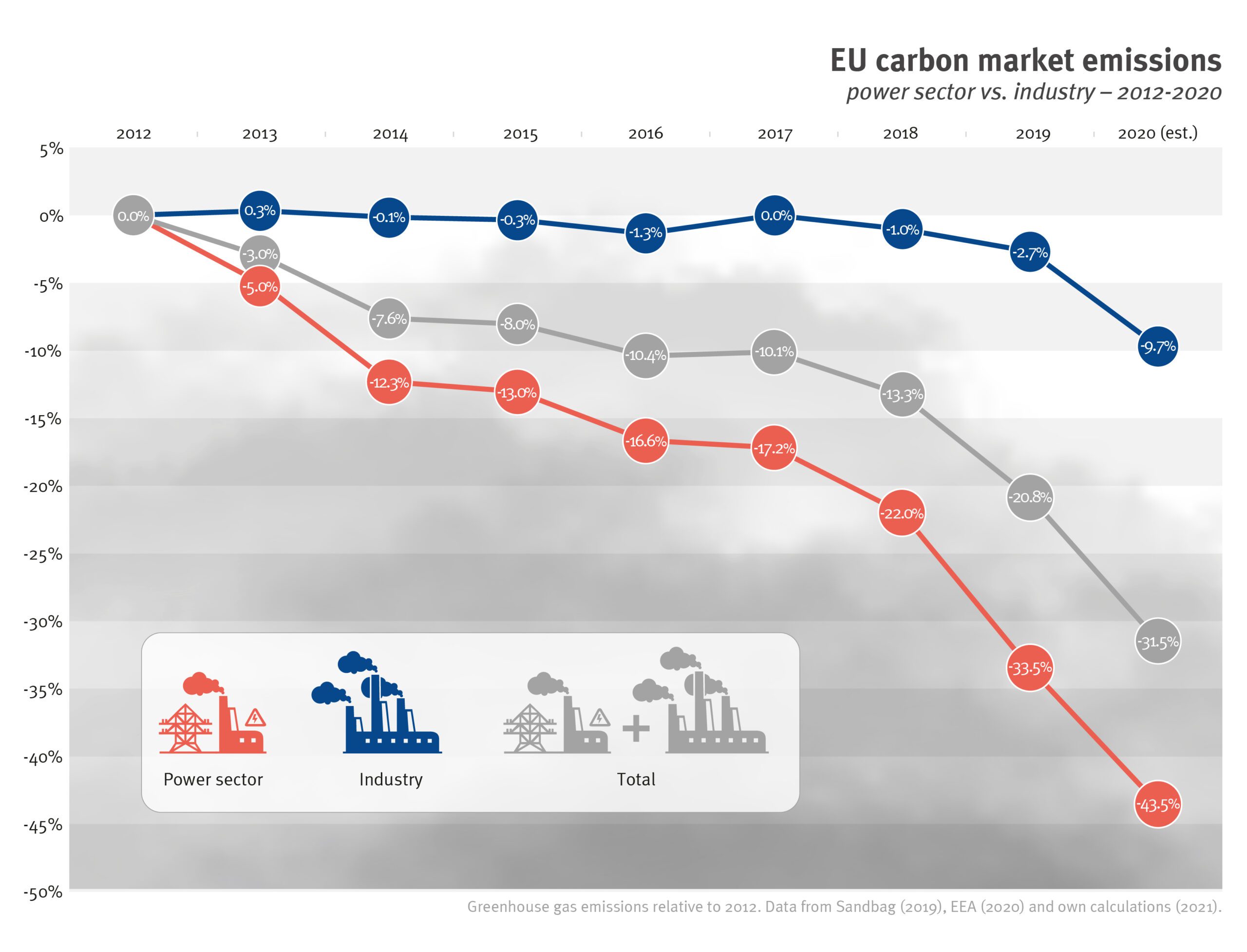Update 12/04/2021: Adjustments to the infographics “EU carbon emissions” and “The effect of a one-off EU ETS cap reduction”
Executive summary
With total greenhouse gas emissions of around 700 million tonnes per year, resource and energy-intensive industry is the third-largest climate polluter in Europe. The cement, chemical and steel sectors alone are responsible for almost 60% of these emissions.
 Industrial emissions are regulated under the EU Emissions Trading System (ETS), but the numerous exemptions and free pollution permits included in the legislation have failed to make the ETS an effective tool to drive down emissions: carbon pollution from heavy industry has hardly decreased since 2012. It is also not expected to go down until 2030.
Industrial emissions are regulated under the EU Emissions Trading System (ETS), but the numerous exemptions and free pollution permits included in the legislation have failed to make the ETS an effective tool to drive down emissions: carbon pollution from heavy industry has hardly decreased since 2012. It is also not expected to go down until 2030.
As part of the EU Green Deal implementation, the scheme will be revised starting in the summer of 2021. This revision is a crucial opportunity to ensure that the industrial sectors covered by it reduce their emissions in line with the EU climate goals and the Paris Agreement objective of limiting global temperature rise to 1.5 degrees Celsius.
To this end, decision-makers should:
• Increase the rate at which emissions decrease (the “Linear Reduction Factor”, LRF) to 5.8% as of 2023 or to 3.1% if combined with a one-off reduction of the cap by 450 million allowances to drive faster emission reductions
• Increase the intake rate of the Market Stability Reserve (MSR) to 36% from 2024 onwards, adopt declining thresholds and automatic cancellation of allowances held in the reserve for more than three years to effectively handle the market surplus
• End free allocation of allowances for energy-intensive industries and the aviation sector to incentivise climate action in these sectors
• Earmark 100% of auctioning revenues in further climate action, industrial innovation, just transition and international climate finance.




